Hva hvis tak ikke var døde flater, men levende skoger? Bli med inn i den frodige visjonen til Friedensreich Hundertwasser – kunstneren og arkitekten som ville gi byen tilbake til naturen. I en tid der grønne tak er trendy, minner han oss om at det startet med en radikal drøm og regnværsdager. Dette er fortellingen om arkitektur som protest, midt i Wien.
Fortsett å lese Den grønne takvisjonenKategori: Uncategorized
Anmeldelse: “Byen, livet og det spatiale dispositiv” av John Pløger
I tidsskrift Plan finner vi en tankevekkende anmeldelse av Pløgers bok «Byen, livet og det spatiale dispositiv«, skrevet av arkitekt og stipendiat Gisle Løkken.
Under overskriften “Fransk romlig teori fra Danmark” skriver Løkken at “skal byen være arena for det gode liv, må vi forstå de krefter som former den”. Han trekker frem bokas påstand om at “byplanlegging gjelder livet,” og peker på hvordan planlegging ofte skjer innenfor et autoritært diskurs-hegemoni, der byens rom blir virkemidler for disiplinering og normering av atferd. Samtidig tydeliggjør han hvordan byutvikling ofte skjer på bekostning av noen til fordel for andre.
Etter 40 år med nyliberalistisk planlegging sitter vi igjen med mange, og til dels urovekkende, erfaringer. Løkkens anmeldelse er skarp og relevant for alle som er opptatt av hva slags byer vi planlegger, og for hvem.
Les hele anmeldelsen HER. Plan Vol. 56, Nr. 4, 2025 (side 30-33).
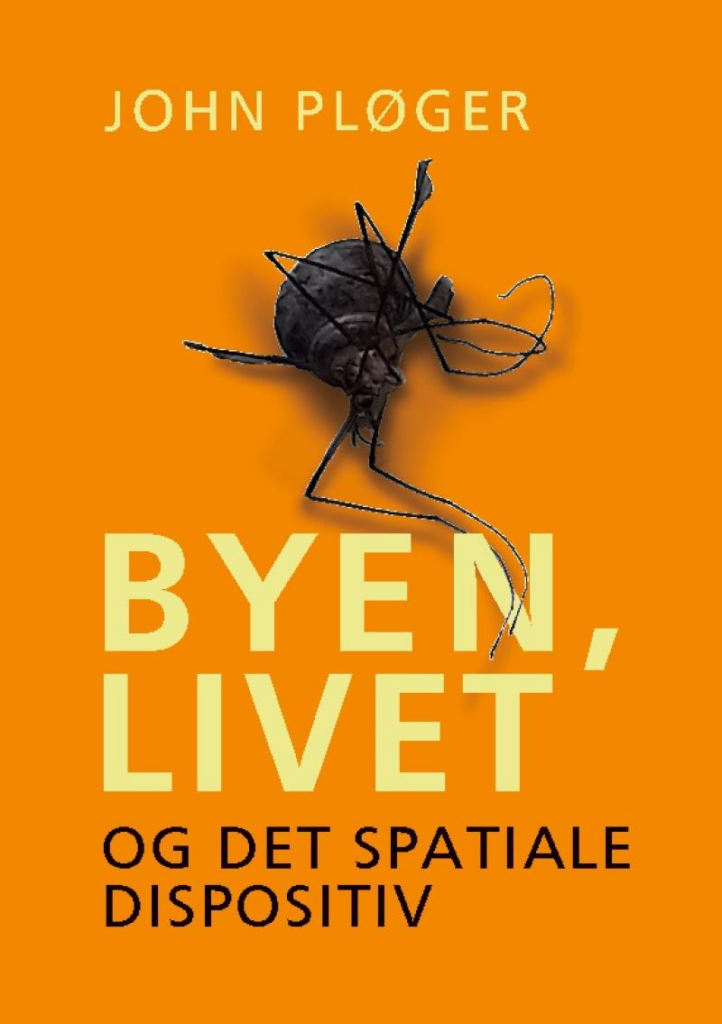
Byvekstavtalen – Å bygge en grønnere fremtid for Kristiansandsregionen
Av Razan Karim, masterstudent innen samfunnsplanlegging, sted og prosess.
Den 10. oktober deltok jeg på en konferanse om byvekstavtalen for Kristiansandsregionen. I dette innlegget deler jeg inntrykk og egne tanker om byvekstavtalen, en ambisiøs plan for å redusere biltrafikk, styrke kollektivtransport og skape bedre bymiljøer.
Fortsett å lese Byvekstavtalen – Å bygge en grønnere fremtid for KristiansandsregionenByforming er også betydninger? Berlin opplevd
Av John Pløger
Å besøke Berlin er å oppleve monumental arkitekturhistorie og samtidig en by som alltid har påvirket Europa både filosofisk og kulturelt. Byen har vært et sentrum for despotiske, autoritære og demokratiske styreformer, og både nazismens, sosialismens og modernismens arkitektur og byplanlegging er synlige. Samtidig er Berlin en kunst- og kulturscene som tar temperaturen på, og kritisk reflekterer over, den aktuelle tidsånd og dens politikk.
Fortsett å lese Byforming er også betydninger? Berlin opplevdSe Byene på Nytt: Poetikken Bak Urban Fotografi
Paulina Nordström åpner opp for en fascinerende reise gjennom fotografiens poesi i sin nyeste artikkel. Hun utforsker forholdet mellom urbane innbyggere og byen ved å invitere leserne til å se byene fra et nytt perspektiv, gjennom poetikken til tre fotografer som fanger essensen av de urbane landskapene som ofte går oss forbi. Hun belyser hvordan deres romlige tilknytning til omgivelsene genererer visuelle landskap som reflekterer byens essens. Med inspirasjon fra teorier av Bachelard, de Certeau, samt Deleuze og Guattari, fremhever hun hvordan fotografi fungerer som et kreativt verktøy for meningsskaping.
Les mer her
UiT markerer 50 år med utdanning innen samfunnsplanlegging
Universitetet i Tromsø markerer 50 år med samfunnsplanlegging, en utdanning startet av Ottar Brox i 1974. I den anledning deler Jørn Cruickshank og Hanne Haaland historien om hvordan denne planutdanningen har vokst fram ved Universitetet i Agder, fra de første årene til dagens samfunnsrelevante program.
Les mer i kapittelet her.
URPLAN seminar
Den 27. september arrangerte URPLAN et seminar om trusler mot lokaldemokratiet i vestlige samfunn. Fremmøtt var Ph.d.-stipendiater, fagstab og representanter fra fylkeskommunen, og ikke minst masterstudenter som var med i første delen av seminaret.
I seminaret hadde vi gleden av å få besøk av Simin Davoudi, professor i byplanlegging ved Newcastle University, Shayan Shokrgozar, PhD-student ved Institutt for geografi ved Universitetet i Bergen, og Manuel Birnbrich, rådgiver i Agder fylkeskommune, som førte oss til verdifulle diskusjonen om bærekraftig planlegging og demokratiske utfordringer.

Hvorfor nektes innbyggerne tilgang til byen?
I et debattinnlegg i Fædrelandsvennen retter stipendiat Vegard Solhjem Knutsen kritikk mot fiskeforbudet i Marvika som setter begrensninger på offentlige rom. Dette åpner for en bredere diskusjon om hvordan byområder privatiseres og reguleres, og hvilke konsekvenser det får for innbyggernes frihet til å benytte felles ressurser.
Les hele innlegget i Fædrelandsvennen.
En inspirerende kveld med Forsker Grand Prix 2024
Av Razan Karim, masterstudent innen samfunnsplanlegging, sted og prosess.

John Pløger, Jørn Cruickshank, og Torill Nyseth har skrevet et minneord om Patsy Healey som gikk bort tidligere i år. Healeys arbeid innen samfunnsplanlegging har hatt stor betydning.
Les mer om hennes bidrag og ettermæle på Arkitektur.no
Fieldtrip in Oslo with students in Urbanism – Life and Planning

Now that the days are getting shorter and there’s an autumn breeze in the air, it’s time to look back on a field trip with students in Oslo at the end of May. Together with our master’s students in Urbanism: life and planning, we explored place-sensitive and immersive methods in urban planning.
We were also joined by two students from the University of California, Berkeley, Alice Bruno and Suraya Akhenaton, whose reflections are shared below:
Fortsett å lese Fieldtrip in Oslo with students in Urbanism – Life and PlanningVindkraftutbygging: Manglende deltakelse, aksept og rettferdighet i norsk vindkraftutvikling – Innsikter fra WINDPLAN
Av Mikaela Vasstrøm, Laura Tolnov Clausen og Kjell Overvåg
Les hele artikkelen HER
Digital tvilling- hvorfor vil ikke planleggere bruke det?
Av Jørn Cruickshank
Digitale verktøy egner seg stadig bedre til å samle og presentere informasjon og til å analysere og simulere effekten av ulike plantiltak, også interaktivt og visuelt. Digitale geospatiale beslutningsstøttesystemer (GDPSS) inkluderer også nå digitale tvillinger av byer og steder, hvor planleggerne kan prøve seg fram med ulike alternative tiltak. Til tross for mulighetene er slike verktøy lite anvendt i norsk planlegging, og forskerne klør seg i hodet over hvorfor. I denne artikkelen pekes det på at årsaken kan være å finne i uavklarte spenninger i plansystemet. Planleggere er naturlig nok opptatt av å være ansvarlige, etterrettelige og nøyaktige, men har vansker med også å bidra til kollektiv utprøving av ulike alternative utviklingsbaner, med andre ord å agere strategisk. Det er særlig som et verktøy for dette siste vi ser et stort potensiale for digitale tvillinger.
Les hele artikkelen HER
Ottar Brox
Et banebrytende individ har forlatt oss og etterlater et varig spor. Urplans egen Jørn Cruickshank har skrivet et innlegg til ære for Ottar Brox på NB Nordnorskdebat sin nettside
«Takk skal du ha, Ottar Brox, for alt du ga, til så mange.» – Jørn Cruickshank
Opplysning og fremmedgjøring – viten og planlegging
I dette blogginnlegget av John Pløger blir temaene opplysning og fremmedgjøring utforsket med fokus på deres betydning i planleggingen av samfunn og byer. Her vil vi få innsikt i hvordan disse begrepene påvirker vår forståelse av omgivelsene, vår tilhørighet til steder, og hvordan de former både politikk og samfunnsutvikling
Av John Erik Pløger, professor emeritus ved institutt for global utvikling og samfunnsplanlegging, UIA.

Seminar og juleavslutning med Urplan
Håper at alle har hatt en fantastisk jul og ønsker dere et strålende nytt år fra hele URPLAN! For å markere avslutningen av det gamle året, arrangerte Paulina Emilia Nordström og Eduardo Gimenez-Cassina Bergareche et minneverdig seminar på Tollboden, etterfulgt av en hjertevarm juleavslutningsmiddag på Flua.

URPLAN’s Smart City Seminar: Nye Horisonter for Urbane Framtider

I høst ble Teatret i Kristiansand sentrum vertskap for en tankevekkende Smart City seminar, arrangert av URPLAN medlemmer Karl Emil Pull og John Pløger. Seminaret samlet fire fremtredende eksperter som delte sine innsikter i de stadig mer omtalte konseptene som preger dagens urbane landskap: «smarte byer,» «digitaliserte byer,» og «vitenskapsbyer.» Dette var en dyp utforskning av hvordan disse begrepene har blitt en del av, og kan bli en av den pågående transformasjonen av byer som tidligere var dominert av industriell produksjon.
Fortsett å lese URPLAN’s Smart City Seminar: Nye Horisonter for Urbane FramtiderNy PhD-stipendiat skal forske på havvind
Vegard Solhjem Knutsen har tidligere jobbet som analytiker i Oxford Research, men nå har han inntatt rollen som URPLANs ferskeste PhD-stipendiat. I dette innlegget forteller han om hva PhD-prosjekt hans går ut på.
Av Vegard Solhjem Knutsen, PhD-stipendiat ved institutt for Global Utvikling og Samfunnsplanlegging

Det flytende, det temporære, det uferdige
I dette innlegget gir John Pløger en innføring i tre begreper som har blitt stadig viktigere innenfor planleggingsfaget. Det flytende, det temporære og det uferdige kan for det utrente øye (hodet) virke nokså like, til tross for distinkte forskjeller mellom dem. Dette innlegget kan hjelpe deg på veien.
Av John Erik Pløger, professor emeritus ved institutt for global utvikling og samfunnsplanlegging, UIA.

Er det gitt at redusert gateparkering vil gå ut over næringsliv?
URPLAN-medlemmene Paulina Nordström og John Pløger har sammen med Idunn Sem (Rådgiver, Fluks – Senter for ung kunst og kultur, UIA) skrevet debattinnlegg i Fædrelandsvennen om biltrafikk i Posebyen, Kristiansand. Trykk på lenken under for å lese deres argumentasjon for hvorfor mindre biltrafikk kan føre til at både næringsliv og mennesker trives bedre i byen.
Gratis tilgang her !
Flytende planlegging i praksis – Musicon, Roskilde
En ny bydel ved Roskilde i Danmark vant 2022 ‘Blandet By Prisen’ innstiftet av avisen Politiken og Dansk Byplanlaboratorium. Musicon er et gjennomtenkt forsøk på å bruke flytende planlegging som strategi for å skape en annerledes bydel basert på en annerledes deltakelsesprosess. Flytende planlegging var et strategisk ledd i stedsutviklingen som til slutt ble til bydelen Musicon.
Av John Erik Pløger, professor emeritus ved institutt for global utvikling og samfunnsplanlegging, UIA.

Studentprosjekt om nytt studenthus i Kristiansand!
Masterstudenter i Helsevitenskap og Samfunnsplanlegging har høsten 2022 jobbet med en case-oppgave som omhandlet etableringen av det nye studenthuset i Kristiansand sentrum.

Planlegging, demokratisk underskudd – hva må gjøres?
Politikere sier planlegging er demokratisk. Det må bety at de anser det som et ‘representativt demokrati’. Planlegging har imidlertid i mer enn 50 år vært kritisert for å ha et demokratisk underskudd. Planleggere sier at offentlig medvirkning er deliberativ, dvs. en forhandling mellom likestilte parter. Borgere kan påvirke forhold som angår dem. Alle er enige om at planlegging er et redskap i styring av samfunnsutviklingen; iallfall arealbruken, areal-disponeringen, plasseringen av funksjoner og bygningskvalitet.
Dette er fine ord, men alt avhenger som bekjent av øynene som ser og hva man legger i ordene. Dette skal belyses her.
Av John Erik Pløger, professor emeritus ved institutt for global utvikling og samfunnsplanlegging, UIA.

Planleggings- og forvaltningsutfordringer for myrområder
Mitt navn er Vetle Ulrichsen Flaget. Jeg er nettopp ferdig med andre semester ved masterprogrammet Global Utvikling og Samfunnsplanlegging – Spesialisering i Samfunnsplanlegging, By- og Regional Utvikling. I den forbindelse har jeg vært så heldig å fått lov til å være vitenskapelig assistent for det femårige forskningsprosjekt REPEAT (REthinking sustainable land use of PEATland). Her er mine erfaringer fra å være i rollen som vitenskapelig assistent.
Av Vetle Ulrichsen Flaget (Masterstudent Global utvikling og samfunnsplanlegging, UiA).
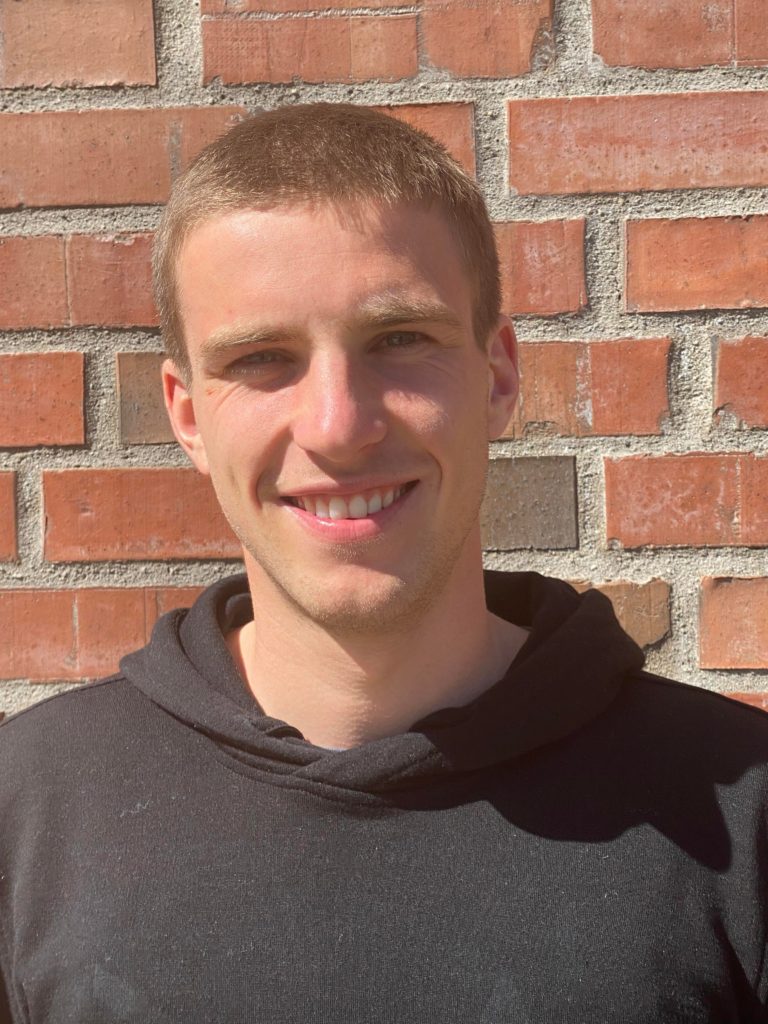
Forskende verksted Oslo
Forskningsprosjekt med fokus på medvirkning. Samarbeid mellom UiA, ByKuben Oslo (Oslo Kommune) og Paaby Prosess.
Av André Seljestad Knudsen (Masterstudent Global utvikling og samfunnsplanlegging, UiA).

Antropocen – Hvorfor skal sosiologer bry seg?
URPLAN-medlem Marthe Elden Wilhelmsen har skrevet et innlegg for Sosiologen der hun argumenterer for miljøsosiologiens rolle i å løse dagens miljø- og klimakrise. Kanskje bør vi skifte kurs, og legge større vekt på sosiologien for å endre de samme sosiale handlingene som tross alt er roten til krisen? Klikk her for lese hennes argumentasjon.
Av Marthe Elden Wilhelmsen (stipendiat ved institutt for Global utvikling og samfunnsplanlegging, UiA).

Kan man selge et bygulv?
Bygulvet i Bjørvika i Oslo er solgt til en internasjonal eiendomsinvestor! Ikke mange vet det. Denne opplysningen fikk vi av Professor Per Gunnar Røe, Universitetet i Oslo, i hans tankevekkende og inspirerende forelesning ved Forskningsgruppen URPLAN sitt seminar. Her fortalte han om et nytt forskningsprosjekt som han er leder for: ‘Truly Public Places’.
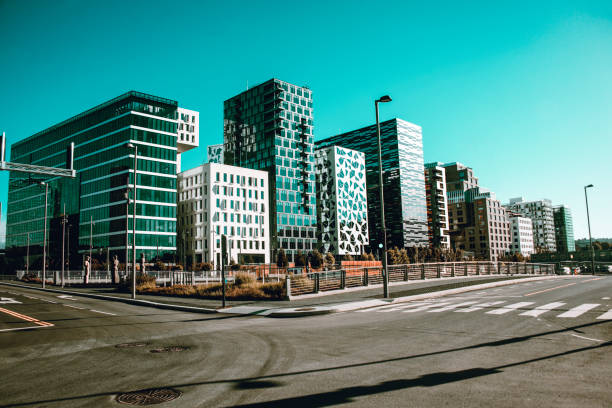
Utforskende verksted i Oslo
Forskningsprosjekt med fokus på medvirkning i samfunnsplanlegging. I et samarbeid med ByKuben (Oslo kommune), Universitetet i Agder og aksjonsforskerne Kirsten Paaby (Paaby Prosess) og Mikaela Vasstrøm inviterte de til utforskende verksted for alle interesserte.
Av André Seljestad Knudsen (masterstudent i Global Utvikling og Samfunnsplanlegging ved UiA).

Planning and place: montage, post-human, milieu
Seminar at UiA May 12
The contestation of what we know and take as place and landscape is deep, not least from non-representational, non-human, and post-human theories. It seems us humans are now trying to domesticate the world to an unsure climate and ecological future, creating fear and frustration as well as radical change of landscapes and cities.
This seminar touches on three in-real-world intertwined problematics:
– Place and landscape as a montage; an assemblage of things, meanings,
and practices.
– The milieu as place of action and planning.
– Governing, planning and things on the move.
Seminar 8. juni 2022 i Kristiansand!
Er mer desentralisert utdanning rett svar på dagens regionale utfordringer? Dette spørsmålet står sentralt når Universitetet i Agder inviterer til et heldags seminar 8. juni.
Fortsett å lese Seminar 8. juni 2022 i Kristiansand!Lefebvre og offentlig planlegging
Utfordringen med å kople sammen samfunns- og arealdelen er nok like gammel som planleggingen selv. Når vi fortsatt sliter med dette problemet, kan forklaringen være at vi tenker på feil måte om sammenhengen mellom det sosiale og det fysiske? Gjennom en sniktitt inn i tenkningen til den franske sosiologen Henri Lefebvre skal jeg i dette korte innlegget prøve å åpne opp for en alternativ vinkling på utfordringen.
Av Jørn Andreas Cruickshank, professor ved institutt for global utvikling og samfunnsplanlegging, UIA.

En uferdig verden krever en uferdig planlegging
Politikk og planlegging er å arbeide uferdig og temporært, men tar vi konsekvensene av det? I en verden bestående av stadig endring, trekker John Erik Pløger frem fem perspektiver på hvordan vi kan planlegge for en fremtid vi ennå ikke kjenner.
Av John Erik Pløger, professor emeritus ved institutt for global utvikling og samfunnsplanlegging, UIA
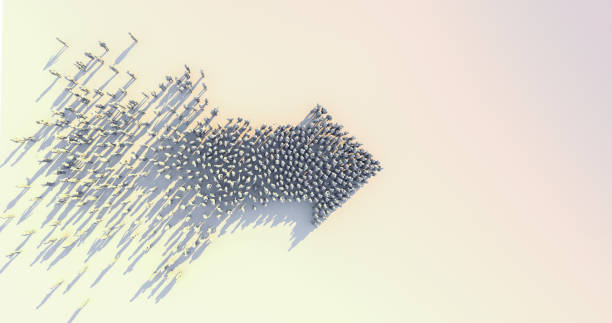
Fortsett å lese En uferdig verden krever en uferdig planlegging
Fargeløs byutvikling i Kristiansand?
Synes du bybildet i Kristiansand blir mer og mer monotont? Er byen i ferd med å miste sin identitet og se ut som alle andre norske byer? Hvorfor skal alle nye bygg være grå og svarte? Flere og flere norske byer har/samarbeider med egne fargeveiledere – er det ikke på tide at også Kristiansand får dette?
Av: bachelorstudenter i samfunnsplanlegging, UiA: André Seljestad Knudsen og Anja Bergan
Erfaringer fra bacheloroppgaven «Fasadefarger i Kvadraturen» ble presentert på «Plan og Pils» den 11. november.

Bærekraft på Lagmannsholmen
Siden publiseringen av «Vår felles framtid» i 1987 har bærekraft spilt en stadig viktigere rolle i diskusjonene om hvordan vi skal utvikle vestlige byer.
Av: Jørn Cruickshank, Institutt for Global utvikling og samfunnsplanlegging, UiA
Denne kronikken er først publisert i Fædrelandsvennen: https://www.fvn.no/mening/leserinnlegg/i/EajwKo/baerekraft-paa-lagmannsholmen
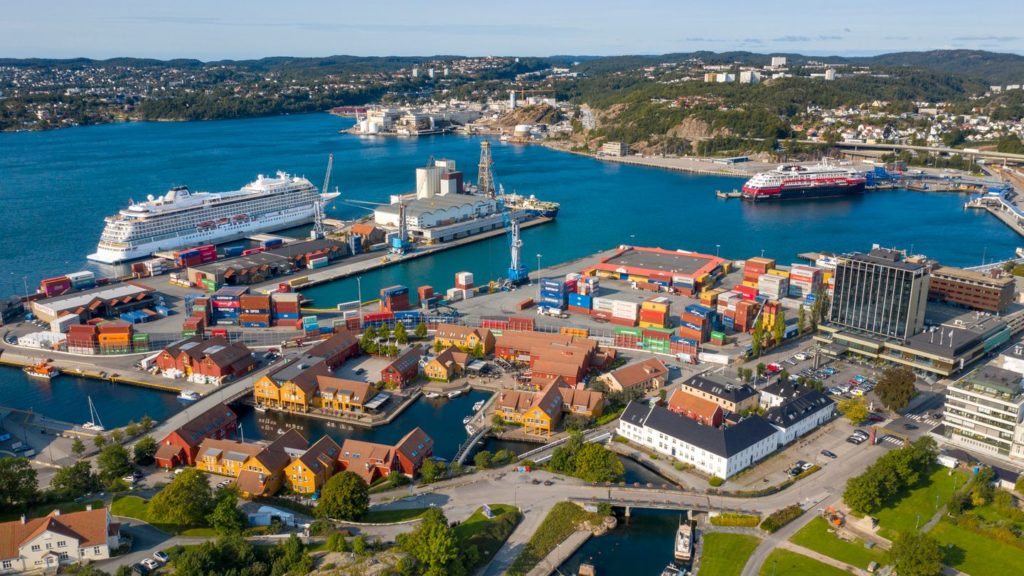
Vi må diskutere hva som rettferdiggjør utbygging av vindkraft i norsk natur
Er det mulig å snakke om landbasert vindkraft igjen eller er konflikten for betent?
Skrevet av:
Mikaela Vasstrøm: førsteamanuensis, Institutt for global utvikling og samfunnsplanlegging
Kjell Overvåg; professor, Institutt for global utvikling og samfunnsplanlegging
Laura Tolnov Clausen; førsteamanuensis, Institutt for global utvikling og samfunnsplanlegging
Hans Kjetil Lysgård; professor og viserektor for forskning og tverrfaglige satsingerUNIVERSITET I AGDER
Klikk på bildet for å lese hele kronikken på forskersonen.no
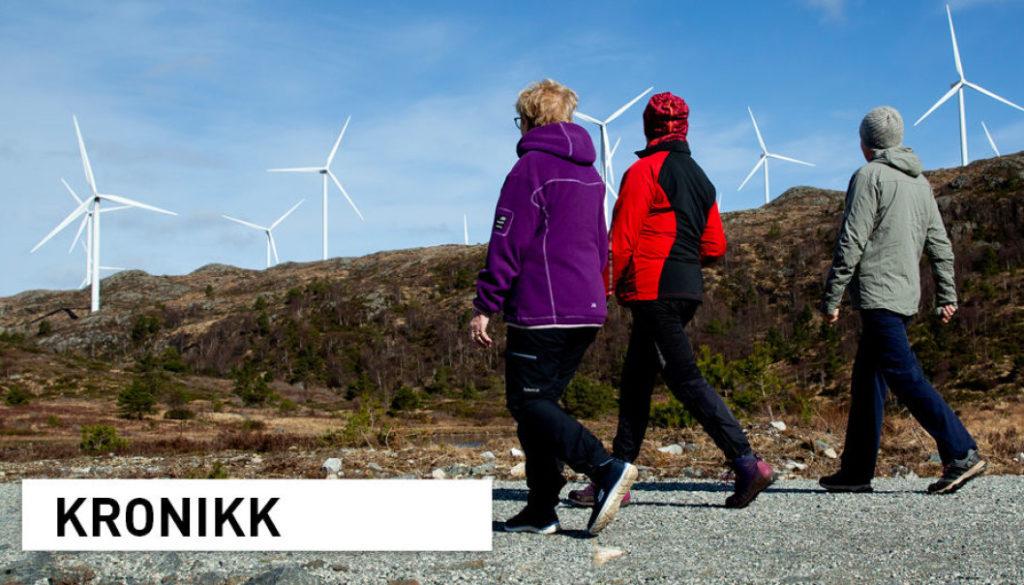
Turisme versus lokal kultur i Solvang, California
Av: Jørn Cruickshank, Institutt for Global utvikling og samfunnsplanlegging, UiA
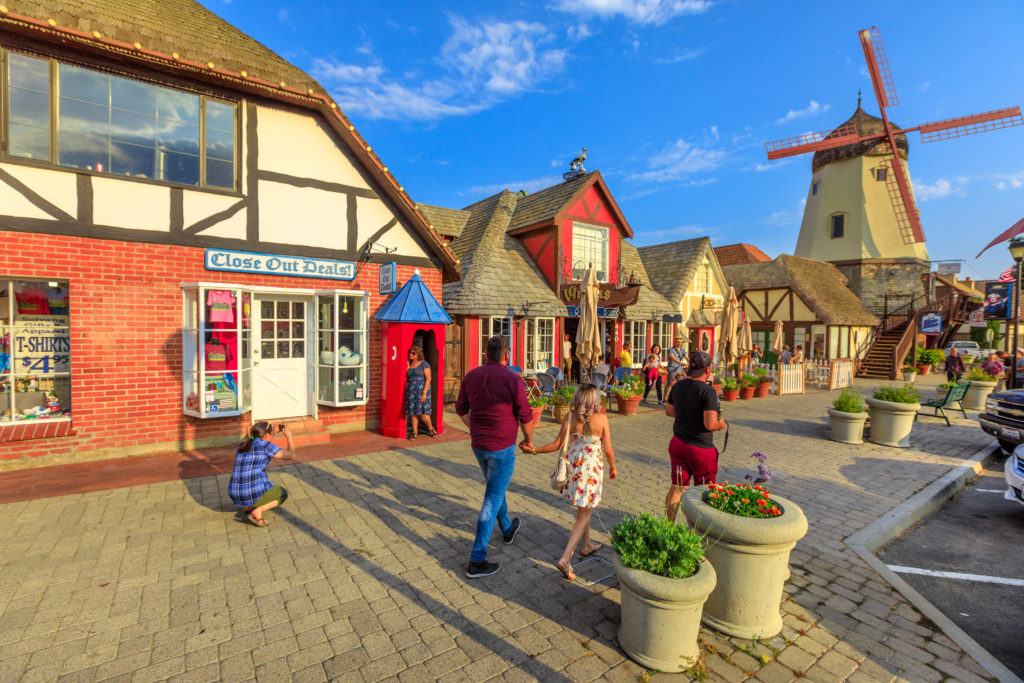
Stedsagenter i Posebyen – studenter i samfunnsplanlegging utforsket stedsensitiv kommunikativ planlegging
Av:Paulina Nordström Førsteamanuensis ved institutt for global utvikling og samfunnsplanlegging på Universitetet i Agder.
Mitt hjem er i Posebyen – en bydel i Kristiansand sentrum Kvadraturen. Det er et område med hvite vernede sørlandske trehus. Familien vår er leietakere, som i planprosesser for området blir sett som deltagere i planprosesser, hvis utleiere synes det er viktig. I Posebyen har jeg hørt fra borgere som bryr seg om sine nærområder bruke uttrykk som «ingen bryr seg» eller «vi gidder ikke stille up mer». Samtidig forteller kommuneplanens nye samfunnsdel Sterkere sammen – Kristiansand mot 2030 at byen vil ha gode nærmiljøer og aktive innbyggere. Denne opplevde «mismatch» mellom politikk og stedsoppfattelse var utgangspunkt for undervisning i samfunnsplanlegging ved UiA.
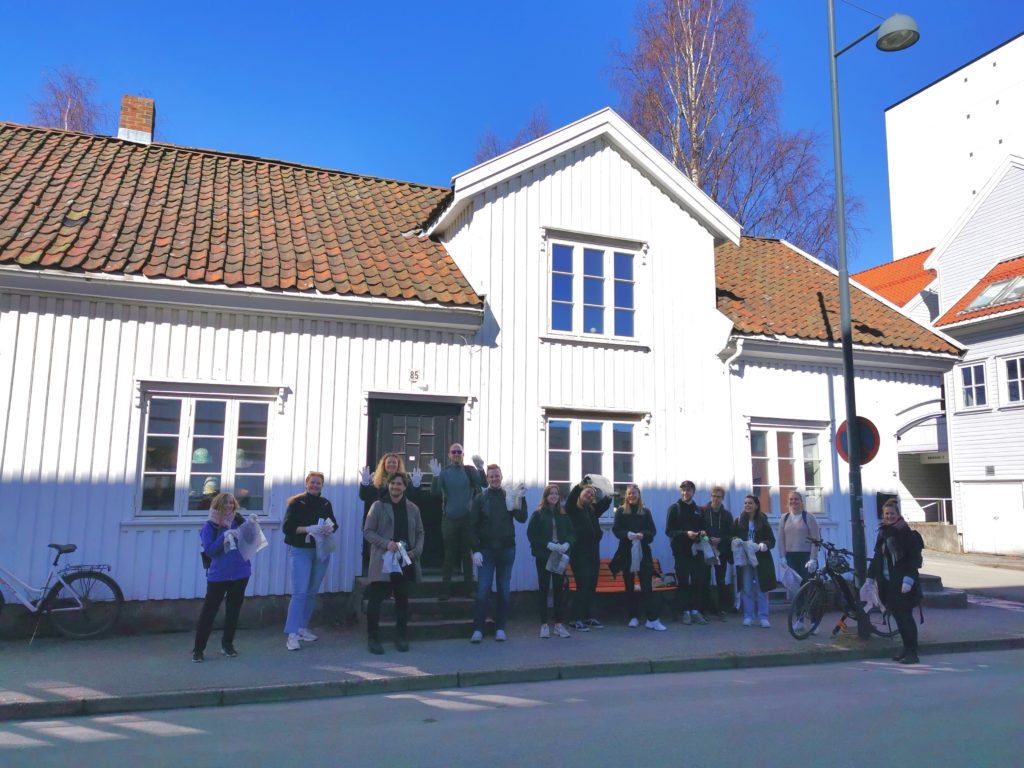
Drivkrefter, motkrefter og fremtidige utfordringer i norsk vindkraftpolitikk
DOI: https://doi.org/10.18261/ISSN1504-3045-2021-01-08
Mikaela Vasstrøm, associate professor, Department of global development and planning, University of Agder – mikaela.vasstrom@uia.no
Hans Kjetil Lysgård, professor and vice rector for Research and interdisciplinary projects, University of Agder
Les innlegget på WINDPLAN:
Green Energy Development and Transition: Have we seen this film before?
By John-Andrew McNeish and Mikaela Vasstrøm Also posted in PRIO blog May4, 2021.
“I have seen this film before, and I didn’t like the ending”.

En mer realistisk kommunal planlegging?
Av:Kjell Overvåg professor på Universitetet i Agder i regional utvikling – samfunnsgeografi og Ulla Higdem profesor på Handelshøgskolen innlandet ved fakultetet for økonomi og samfunnsvitenskap.
